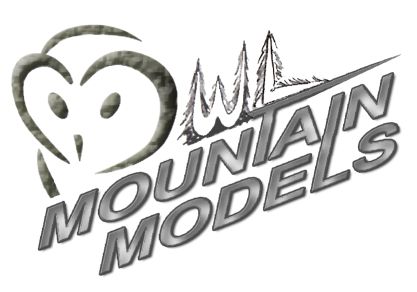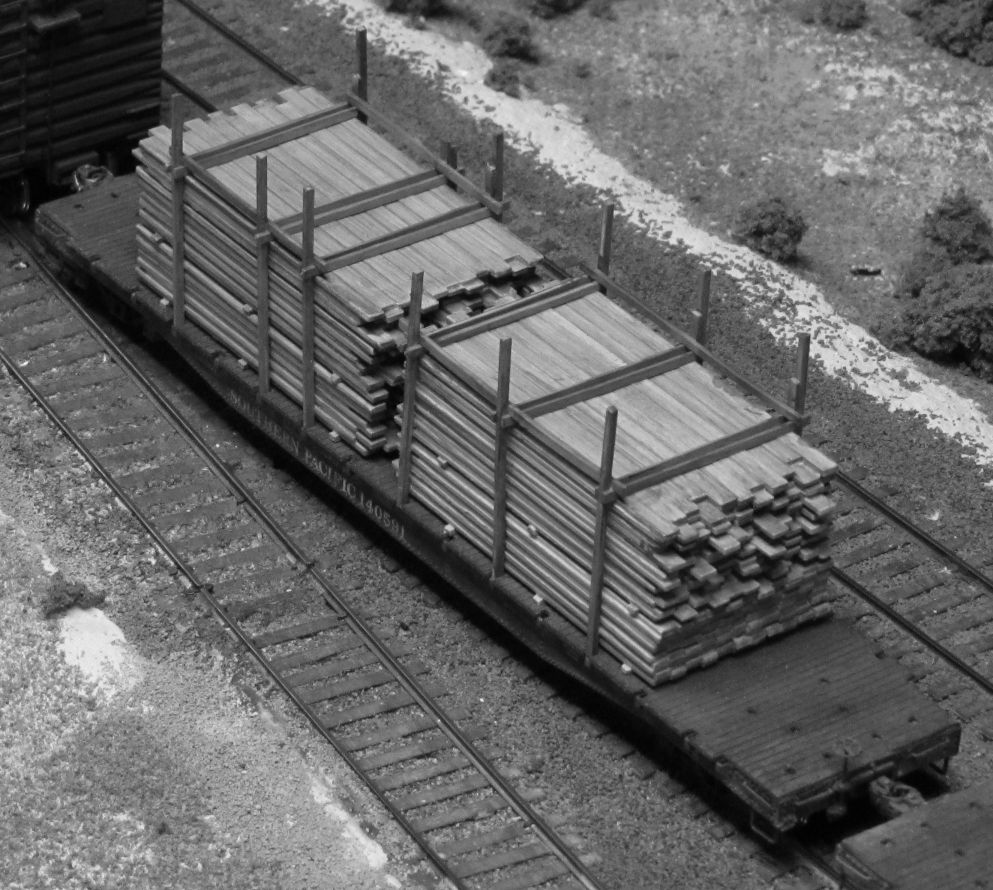 Owl Mountain Models
Owl Mountain ModelsRough-cut lumber was shipped on flatcars and in gondolas since the earliest days of railroading in the US. Finished lumber was usually shipped in close boxcars to keep the wood out of the weather and from getting dirty from steam engine ashes and soot.
Lumber was shipped with different ways of loading, stacking, and bracing over the years. By 1908 the Master Car Builders Association (MCB) developed recommended practices and standards for loading open-top cars. The American Railway Association (ARA), which later became the Association of American Railroads (AAR), continued to update these standardized practices. These AAR standards are incorporated into all our 3000-Series load kits to give the modeler the guidance to build loads as prototypically correct as possible.

Between 1908 and 1960 there were multiple ways to secure a load of lumber to a flatcar. Vertical hardwood stakes or saplings were the most common. Either wooden cross ties or twisted iron wire was used between opposite stakes over the load. Iron wire was also used around the top “unit” of lumber to prevent the upper unit of lumber from shifting (lower units had enough weight above that they were much less likely to shift so didn't use wire). Wooden longitudinal ties kept the stakes separated by the correct length down the car, and hopefully prevented shifting of the load and breaking of the stakes. By 1954, photos began showing high-tension steel banding replacing the iron wire as cross ties and around the top units of lumber. Iron wire remained an option for use well into the 1960s. Click here(owlmtmodels.com/3001-series/tips.html) for more information about modeling the various types of bracing and banding.
Prior to about 1960, lumber was oversized enough to make on-size finished dimensional lumber after final planing. The lumber industry always counted lumber in quarter inch increments. A 2x4 to us would be called a 8x16 by the mills. If they took 1/4” off in finish milling you can easily see that they would have to start with a 10x18 to get a finished 8x16 “quarters” (2x4). After 1960, the housing industries, and eventually commercial buildings, used today's “undersized” dimensional lumber where a 2x4 is really 1.625”x3.625”. The 3001 kit models a nominal 3x10,” which would be a common size to cut 2x8's or 2x4's at a local sawmill or lumber yard. Also after about 1960 most lumber shipments by rail were banded together with high-tension steel banding into palatalized “units” that were cut within 1/4” of final length. You see this today anytime you walk into a lumber yard or home improvement center. The 3001 kit is designed therefore to be generally used before the Mid-1960s era.